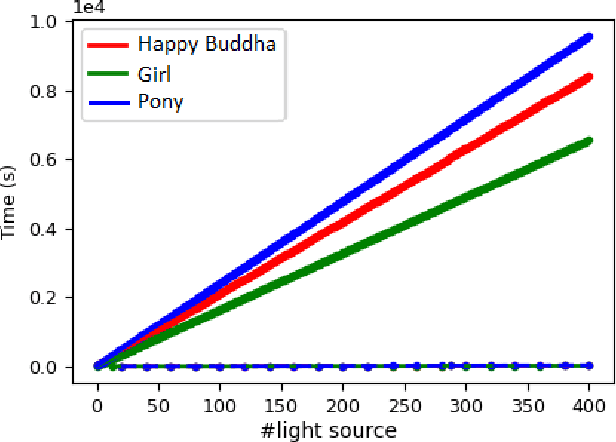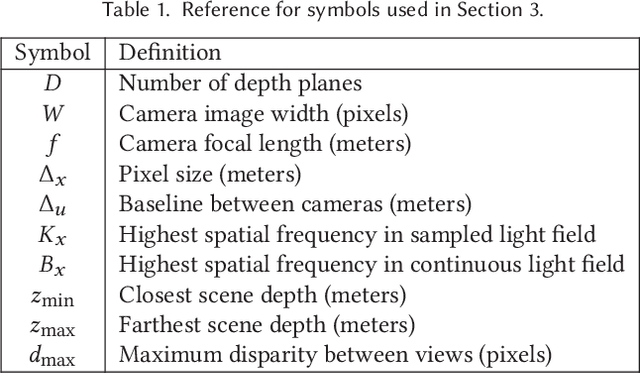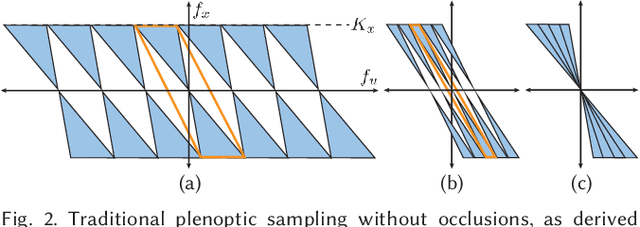Rodrigo Ortiz-Cayon
Learning Neural Transmittance for Efficient Rendering of Reflectance Fields
Oct 25, 2021



Abstract:Recently neural volumetric representations such as neural reflectance fields have been widely applied to faithfully reproduce the appearance of real-world objects and scenes under novel viewpoints and lighting conditions. However, it remains challenging and time-consuming to render such representations under complex lighting such as environment maps, which requires individual ray marching towards each single light to calculate the transmittance at every sampled point. In this paper, we propose a novel method based on precomputed Neural Transmittance Functions to accelerate the rendering of neural reflectance fields. Our neural transmittance functions enable us to efficiently query the transmittance at an arbitrary point in space along an arbitrary ray without tedious ray marching, which effectively reduces the time-complexity of the rendering. We propose a novel formulation for the neural transmittance function, and train it jointly with the neural reflectance fields on images captured under collocated camera and light, while enforcing monotonicity. Results on real and synthetic scenes demonstrate almost two order of magnitude speedup for renderings under environment maps with minimal accuracy loss.
Local Light Field Fusion: Practical View Synthesis with Prescriptive Sampling Guidelines
May 02, 2019



Abstract:We present a practical and robust deep learning solution for capturing and rendering novel views of complex real world scenes for virtual exploration. Previous approaches either require intractably dense view sampling or provide little to no guidance for how users should sample views of a scene to reliably render high-quality novel views. Instead, we propose an algorithm for view synthesis from an irregular grid of sampled views that first expands each sampled view into a local light field via a multiplane image (MPI) scene representation, then renders novel views by blending adjacent local light fields. We extend traditional plenoptic sampling theory to derive a bound that specifies precisely how densely users should sample views of a given scene when using our algorithm. In practice, we apply this bound to capture and render views of real world scenes that achieve the perceptual quality of Nyquist rate view sampling while using up to 4000x fewer views. We demonstrate our approach's practicality with an augmented reality smartphone app that guides users to capture input images of a scene and viewers that enable realtime virtual exploration on desktop and mobile platforms.
 Add to Chrome
Add to Chrome Add to Firefox
Add to Firefox Add to Edge
Add to Edge